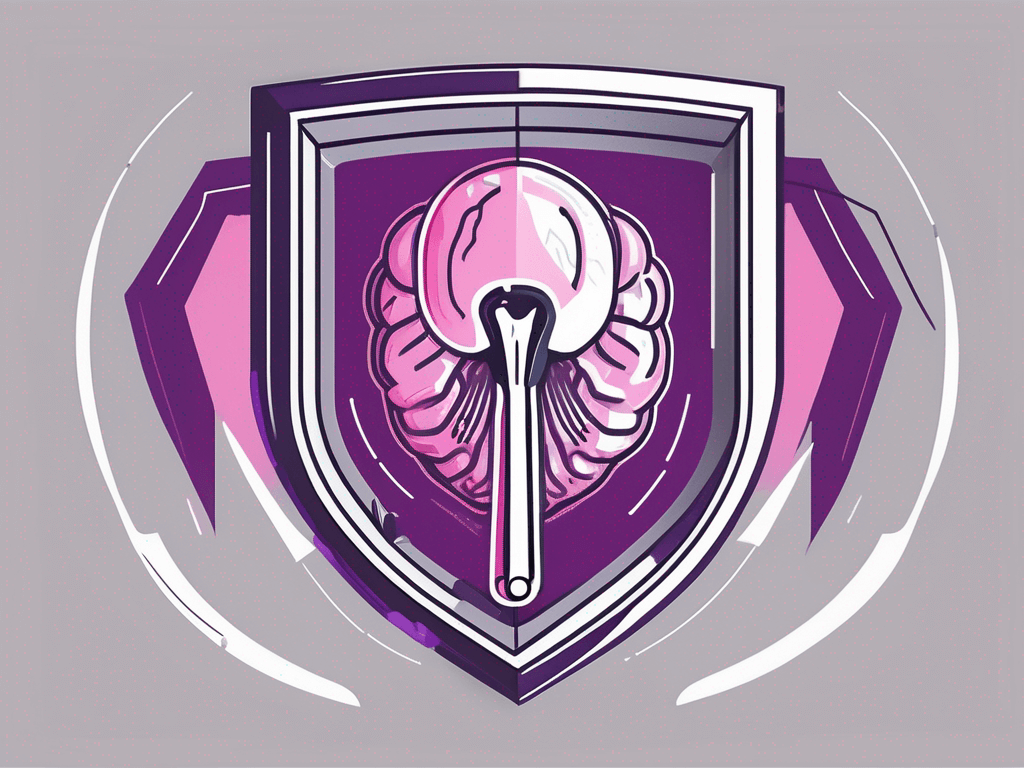Considering radical prostatectomy as a treatment option for prostate cancer? This guide comprehensively explores the procedure, its benefits, and potential risks. Radical prostatectomy involves complete removal of the prostate gland to eliminate cancer cells. Benefits include potential for complete cancer removal, lower risk of recurrence, and improved quality of life. However, it’s crucial to weigh risks like short-term surgical complications and long-term health implications such as erectile dysfunction and urinary incontinence. Making an informed decision involves discussing factors like age, health, and preferences with your healthcare provider. Recovery and rehabilitation efforts are vital for physical and emotional well-being post-surgery. Remember, personalized care and support networks play key roles in navigating this journey towards long-term health.
Are you or a loved one considering radical prostatectomy as a treatment option for prostate cancer? Understanding the benefits and risks of this procedure is crucial in making an informed decision. In this comprehensive guide, we will delve into the intricacies of radical prostatectomy, discuss its potential benefits, explore the associated risks and complications, and provide guidance on how to make the best decision for you or your loved one’s long-term health and well-being.
Understanding Radical Prostatectomy
Radical prostatectomy is a surgical procedure primarily designed to treat localized prostate cancer. It involves the complete removal of the prostate gland, the organ responsible for producing seminal fluid, as well as the surrounding tissues. By removing the cancerous prostate gland, radical prostatectomy aims to eliminate or curtail the spread of cancer cells.
What is Radical Prostatectomy?
Radical prostatectomy is a complex surgery that requires the expertise of a skilled urologic surgeon. During the procedure, the surgeon may choose to perform either an open, laparoscopic, or robotic-assisted approach, depending on individual circumstances and surgeon preference. Although the technique may vary, the goal remains the same: complete removal of the cancerous prostate.
The Procedure of Radical Prostatectomy
Prior to the surgery, diagnostic tests, such as biopsies and imaging scans, are performed to assess the extent and aggressiveness of the cancer. These tests provide valuable information that helps the surgeon plan the surgical approach and determine the best course of action.
The surgeon will then discuss the procedure in detail with the patient, addressing any concerns or questions they may have. It is crucial for patients to have a clear understanding of what to expect before, during, and after the surgery.
On the day of surgery, the patient will be admitted to the hospital and prepared for the procedure. They will be given anesthesia to ensure a painless experience during the surgery. An anesthesiologist will closely monitor the patient’s vital signs throughout the entire procedure to ensure their safety and comfort.
The surgeon will make an incision in the lower abdomen or perineum, gaining access to the prostate gland. The choice of incision location depends on various factors, including the patient’s anatomy and the surgeon’s preference. Through this incision, the surgeon will meticulously remove the prostate, utilizing techniques to minimize damage to surrounding structures, such as the nerves responsible for erectile function and continence.
During the surgery, the surgeon may also perform lymph node dissection to check for the presence of cancer cells in the nearby lymph nodes. This step helps determine the stage of the cancer and guides further treatment decisions. The duration of the surgery and the subsequent hospital stay will vary depending on the complexity of the case and the chosen surgical approach. Some patients may require a longer hospital stay for close monitoring and post-operative care, while others may be discharged within a few days.
Recovery and rehabilitation efforts will then commence under the guidance of a healthcare team specialized in post-operative care. This team will closely monitor the patient’s progress, manage pain, and provide instructions on wound care, physical activity, and dietary modifications. Follow-up appointments will be scheduled to monitor the patient’s recovery, assess the effectiveness of the surgery, and address any concerns or complications that may arise. These appointments are crucial for long-term management and surveillance of prostate cancer.
It is important for patients to understand that radical prostatectomy is a major surgery and recovery can take time. Each individual’s recovery journey is unique, and it is essential to follow the healthcare team’s instructions and seek support from loved ones during this period. With advancements in surgical techniques and post-operative care, radical prostatectomy has become a widely accepted and effective treatment option for localized prostate cancer. It offers the potential for complete cancer removal and improved quality of life for many patients.
Benefits of Radical Prostatectomy
While the decision to undergo radical prostatectomy may feel overwhelming, it is important to recognize the potential benefits of this procedure:
Potential for Complete Removal of Cancer
Radical prostatectomy offers a high likelihood of completely removing localized prostate cancer, potentially eliminating the need for further treatments, such as radiation therapy or androgen deprivation therapy. Successfully eradicating the cancerous cells from your body can provide peace of mind and increase the chances of a favorable long-term outcome.
During a radical prostatectomy, the surgeon carefully removes the entire prostate gland, along with any surrounding tissues that may be affected by cancer. This comprehensive approach ensures that all cancer cells are removed, reducing the risk of cancer recurrence and providing a sense of relief for patients and their loved ones.
Furthermore, by removing the cancerous prostate gland, radical prostatectomy can also prevent the spread of cancer to other parts of the body. This is particularly beneficial for individuals with early-stage prostate cancer, as it increases the chances of a complete recovery and a cancer-free future.
Lower Risk of Cancer Recurrence
With the complete removal of the prostate gland, the risk of cancer recurrence may be significantly reduced. However, it is essential to understand that recurrence can still occur in certain cases. Regular follow-up care, including PSA testing and medical consultations, will be essential in monitoring for any signs of recurrence and addressing them promptly.
By closely monitoring your PSA levels after a radical prostatectomy, healthcare professionals can detect any potential signs of cancer recurrence at an early stage. This allows for timely intervention and the implementation of appropriate treatment strategies, such as salvage radiation therapy or hormonal therapy, if necessary. Early detection of recurrence can improve the chances of successful treatment and long-term survival.
It is important to note that the risk of cancer recurrence can vary depending on various factors, including the stage and aggressiveness of the cancer, as well as individual patient characteristics. Your healthcare team will provide you with personalized information and guidance regarding your specific risk profile and the appropriate follow-up care required.
Improved Quality of Life Post-surgery
For many individuals, living with prostate cancer can cause significant physical and emotional distress. By removing the cancerous prostate gland, radical prostatectomy can relieve symptoms such as urinary difficulties, pelvic pain, and anxiety related to the presence of cancer. Regaining a sense of normalcy and quality of life is a crucial consideration when making decisions regarding treatment options.
After a successful radical prostatectomy, many patients experience an improvement in urinary function. This is because the removal of the prostate gland can alleviate urinary symptoms caused by prostate enlargement or obstruction. Patients often report a decrease in urinary frequency, urgency, and nocturia, leading to a better overall quality of life.
In addition to the physical benefits, radical prostatectomy can also have a positive impact on emotional well-being. The removal of cancerous tissue can alleviate anxiety and fear associated with the presence of cancer, allowing patients to focus on their recovery and future goals. The restoration of a cancer-free life can bring a sense of relief and optimism, promoting mental well-being and emotional resilience.
It is important to note that every patient’s experience with radical prostatectomy may vary. Some individuals may experience temporary side effects, such as erectile dysfunction or urinary incontinence, which can be managed with appropriate medical interventions and support. Your healthcare team will provide you with comprehensive pre- and post-operative care, including counseling and rehabilitation services, to ensure the best possible outcome and quality of life after surgery.
Risks and Complications of Radical Prostatectomy
While radical prostatectomy offers numerous potential benefits, it is important to understand the associated risks and complications:
Short-term Surgical Risks
As with any surgical procedure, radical prostatectomy carries the risk of short-term complications. These may include bleeding, infection, damage to surrounding organs or nerves, blood clots, and reaction to anesthesia. While these risks are relatively low, your surgeon will discuss them with you and take measures to minimize the potential for complications.
Long-term Health Implications
After a radical prostatectomy, men may experience long-term health implications such as erectile dysfunction and urinary incontinence. Although advances in surgical techniques aim to minimize these effects, it is important to acknowledge that they may still occur. Utilizing rehabilitative techniques and seeking appropriate medical guidance can help manage and alleviate these concerns.
Psychological Impact of Radical Prostatectomy
Undergoing radical prostatectomy can have a profound psychological impact on individuals and their partners. It is natural to experience a range of emotions, including anxiety, depression, grief, and changes in self-esteem and body image. Seeking support from healthcare professionals, support groups, and loved ones can help address these emotional aspects and foster overall well-being during the recovery process.
Making an Informed Decision
When considering radical prostatectomy, it is important to gather all the necessary information and consider various factors:
Factors to Consider Before Undergoing Surgery
Factors to take into account include your age, overall health, cancer stage and aggressiveness, potential side effects, and personal preferences. Discussing these factors with your healthcare provider, considering second opinions, and seeking input from loved ones can help you make an informed decision that aligns with your individual needs and aspirations.
Discussing with Your Healthcare Provider
Open and honest communication with your healthcare provider is paramount. They will provide you with detailed information about the procedure, the potential risks and benefits, and potential alternatives. Be sure to ask questions, clarify any concerns, and express your preferences and expectations to ensure a collaborative and patient-centered approach to your care.
Living with the Aftermath: Recovery and Rehabilitation
The recovery period after radical prostatectomy can vary from person to person. It is crucial to follow your healthcare provider’s guidelines for post-operative care, rehabilitation exercises, and lifestyle modifications. Utilizing support networks, engaging in pelvic floor muscle exercises, and maintaining a positive mindset will aid in your physical and emotional recovery.
Remember, no two individuals are the same, and what may be the ideal treatment approach for one person may not be suitable for another. It is important to consider the unique circumstances and consult with your healthcare provider to determine the most appropriate treatment plan. By arming yourself with knowledge, seeking support, and actively participating in the decision-making process, you can make the best choices for your long-term health and well-being.






